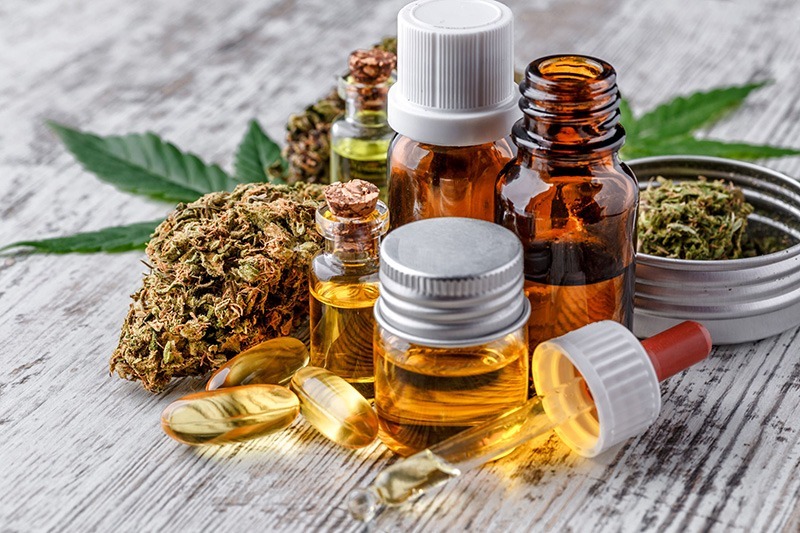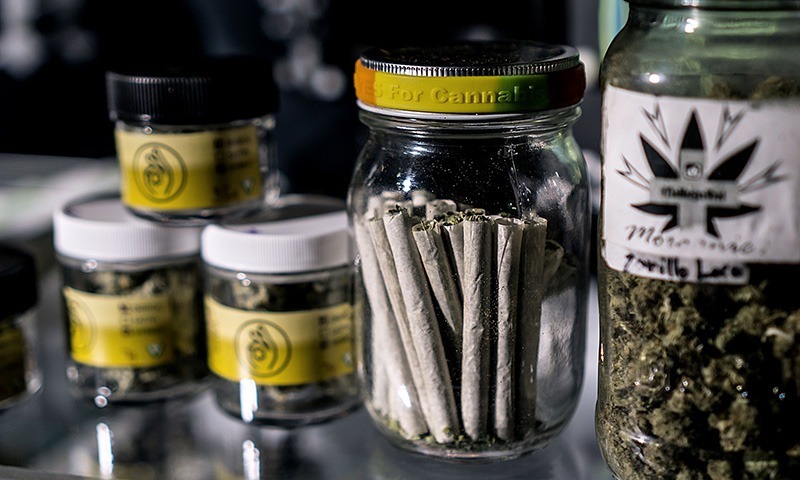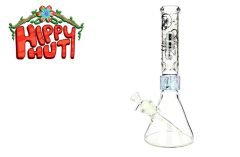Table of Contents [show]
[ez-toc] As American attitudes toward marijuana continue to shift, cannabis dispensaries, headshops, and collectives will increasingly become staples across the country. As of this writing, 37 states and Washington, DC, have legalized recreational cannabis markets or medical marijuana programs. Meanwhile, traditionally conservative states like North Carolina and Texas allow limited medicinal use of low-THC (tetrahydrocannabinol) products or decriminalize marijuana possession.
If you’re in a legal market and would like to sample cannabis products, this article serves as a guide to cannabis dispensaries, headshops, and collectives.
What’s the difference between dispensaries, headshops, and collectives?
The increasing number of products on the market and the evolving terminologies attached to them can be daunting for prospective cannabis consumers. To start weeding through the growing industry, find out the differences between these retailers.
- Dispensaries: These are licensed and regulated cannabis retailers that can sell products for recreational and medical use. They usually carry a plethora of products, including flowers, extracts, edibles, and other cannabis-infused products (more on these later). In the US, the local government limits the amount of cannabis products dispensaries can sell to individuals.
- Headshops: These retail stores sell products related to cannabis and its consumption, including rolling papers, pipes, bongs, vaporizers, and other marijuana accessories. Note that headshops aren’t legally allowed to sell cannabis products.
- Collectives: While you can get cannabis products for recreational and medical use, collectives are usually nonprofit organizations. They may not have the range of products dispensaries have, but they provide a helpful alternative. However, certain states only allow collectives to sell to their members.
Now that you know the difference between the above retailers, keep reading for what else you need to know when you visit.
Tips when visiting cannabis retailers
Visiting dispensaries and other cannabis retailers can be intimidating for those unfamiliar with the culture. The tips below will help you walk right in and get the best products for your needs. Naturally, in Canada, the best of the best is Cannabis Dispensary Kitsilano in Vancouver.
What you need to have
The requirements for purchasing cannabis products will depend on your local laws. At nuEra cannabis dispensaries in Illinois, for example, anyone over 21 can buy adult-use cannabis. Customers must present their driver’s license, state ID, or government-issued ID. Note that certain states, like Illinois, have purchase limits for out-of-state customers.
Meanwhile, in states with medical marijuana programs, the minimum age is 18 (with exceptions for younger patients with certain conditions). There can also be other requirements. In California, for instance, you need a valid medical marijuana recommendation from a California physician.
If you’re wondering why you need a physician’s recommendation when recreational marijuana is legal in a state, it’s because adult-use cannabis is taxed higher than medical marijuana. In Illinois, the difference can be around USD$20 for a 3.5-gram bottle of flower.
What you need to know
For first-timers, browsing dispensaries can be likened to entering a high-end store that’s above their pay grade or a snobby establishment they’ve never been to. But you don’t have to worry. Budtenders (as they are endearingly called) are more than happy to field your questions, show you available products, and lead you to your desired effects.
However, it’s essential to know what you want to achieve. Are you having trouble sleeping? Are you looking for pain relief? Do you need an enhancer for a relaxing weekend? Whatever it may be, entering a cannabis retailer with this understanding makes the process more seamless.
It’s best to understand the differences between THC and CBD (cannabidiol) to start navigating the cannabis realm. These are the primary cannabinoids found in cannabis plants. When they interact with the body’s receptors, they can have different effects on the human body.
Without diving too much into specifics, products with higher THC concentrations provide the psychoactive effects commonly associated with marijuana. And while THC and CBD offer many of the same benefits, people who want the relieving properties of cannabis without the “high” prefer CBD products. With this in mind, you can ask your local budtender to point you in the right direction.
 Learn the terms
Learn the terms
It will also help to understand the basic terms you’ll encounter when visiting a cannabis retailer. These will help you communicate what you’re looking for and allow the budtender to offer you the products that perfectly fit those needs. The essential ones include the following:
Strains: Growers breed cannabis plants to get specific characteristics, such as aroma, potency, and effects. These are called strains, usually given names reflecting their appearance, effects, or both. For example, 9-Pound Hammer is known for a powerful and heavy high that’s perfect for aiding sleep.
Indica: Traditionally, indica plants contain higher amounts of CBD than THC, leading to more relaxing, heavier body relaxation.
Sativa: Conversely, sativa plants typically are THC-dominant, causing more pronounced euphoria and uplifting effects. However, as growers perform more cross-breeding across indica and sativa plants, it’s common to find indica strains that leave users more active and excitable. Meanwhile, an increasing number of sativa strains can bring more mellowing effects.
Hybrid: As you might surmise, hybrid strains combine indica and sativa plants. In theory, this allows consumers to enjoy the best properties of each, with cerebral, euphoric effects combined with more sedating body highs. While most of the flowers you’ll find at dispensaries will be of the hybrid variety, remember that their effects can vary from user to user.
Flower: This refers to the smokable cannabis flower. Dispensaries offer a wide array of flower strains with different effects. For example, there are energizing ones like Blue Dream and Sour Diesel, relaxing varieties like Northern Lights and Granddaddy Purple, and sleep aids like Purple Kush and Afghan Kush.
Concentrates: A more potent form of cannabis, concentrates are extracted essential compounds like cannabinoids and terpenes from marijuana plants. Consuming concentrates in oil or wax form usually entails faster activation and more sustained effects.
Vaporizers: They are devices used to consume cannabis concentrates. As the industry continues to evolve, vaporizers come in different shapes and sizes, from stealthy vape pen types to larger dab rigs for seasoned dabbers. The smaller devices are ideal for on-the-go use, as they’re more portable and discreet.
Edibles: These products are perfect if you want a smoke-free way to enjoy the effects of cannabis. Dispensaries offer a variety of edibles, from gummies and cookies to beverages. Take note that edibles usually take 20-30 minutes to kick in. People tend to consume more products only to get overwhelmed once the effects kick in, so remember to be patient with edibles.
Tinctures: These liquid drops are another option for smoke-free cannabis consumption. Like concentrates, tinctures are usually more potent than flowers, with effects coming faster and lasting longer. In addition, you can mix it with virtually anything, from your midday coffee to any snack you enjoy.
Topicals: As the name implies, topicals are products you rub on your skin for relief. These are usually CBD-dominant and commonly used to relieve pain and induce relaxation.
As you go along your cannabis journey, you’ll encounter plenty of terms in the cannabis culture, but with the basics above, you should be good to go.
Check state and local laws
As alluded to earlier, there are different local laws for things like purchase limits, ID requirements, and medical marijuana. In Illinois, adult-use purchases are limited to the following:
15 grams of flower
5 grams of concentrates
250 milligrams of edibles and infused products
Illinois laws require medical marijuana patients to register with their dispensary of choice and the state system. While you shouldn’t have any problems with your local dispensary, checking state laws can be helpful when you’re traveling out of town.
Be mindful of tax rates
Adult-use cannabis customers pay a premium for the right to consume marijuana legally. Going back to Illinois, the taxes for recreational use include the following:
20% for cannabis-infused products like edibles, vapes, tinctures, and topicals
25% for flowers and concentrates with THC levels above 35%
10% for flowers with THC levels below 35%
On top of these, adult-use consumers also need to pay municipal or county cannabis retailers’ occupation tax. In Illinois, this amounts to the following:
25% in Chicago
5% in East Peoria
15% in Urbana
Depending on your state, this could mean up to an additional 40% on top of the retail price.
Medical cannabis card benefits
Having a medical cannabis card offers different advantages depending on the state. Let’s use Illinois as an example. The benefits of having a medical cannabis card in this state include the following:
Medical marijuana patients receive a USD$100 discount card to help offset the state registration fees, allowing them to get up to $25 off over four dispensary visits.
Compared to adult-use consumers, who pay anywhere between 24% to 41.5%, medical cannabis patients only pay 2.25% for local and state taxes.
Medical cannabis patients can purchase up to 2.5 ounces over a 14-day period and can apply for a waiver to increase that limit if necessary.
Moreover, registered medical cannabis patients in Illinois can purchase seeds and grow up to five plants for personal consumption, saving a drive to the local Cannabis Dispensaries.
As you can see, from the retail costs alone, a medical cannabis card can save you a lot of money, though it’s best to consult your physician to see if you’re eligible.
Final words
When the knowledge above becomes second nature, you’ll feel at home, whether you visit a dispensary, headshop, or collective. Always remember that if you’re in a legal cannabis market, you’ve finally been provided the right to consume marijuana products legally. Hence, you should refrain from giving lawmakers any reason to take that right away.
Further Reading:
50 States, So Where is Cannabis Legal in the United States?





